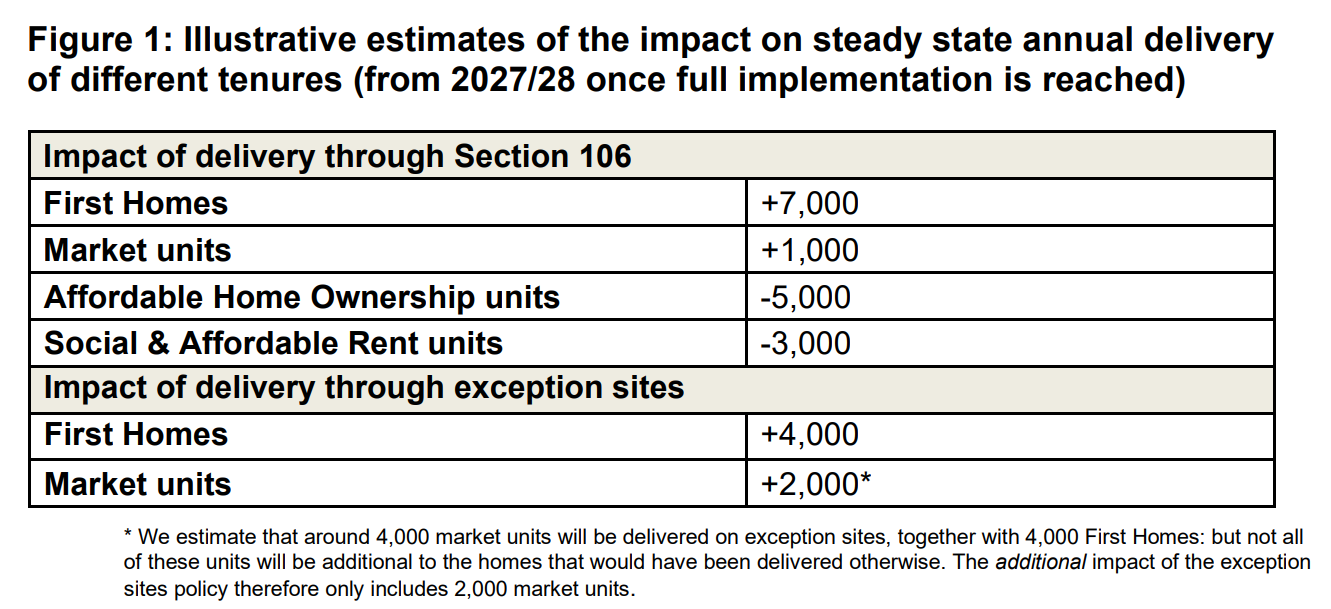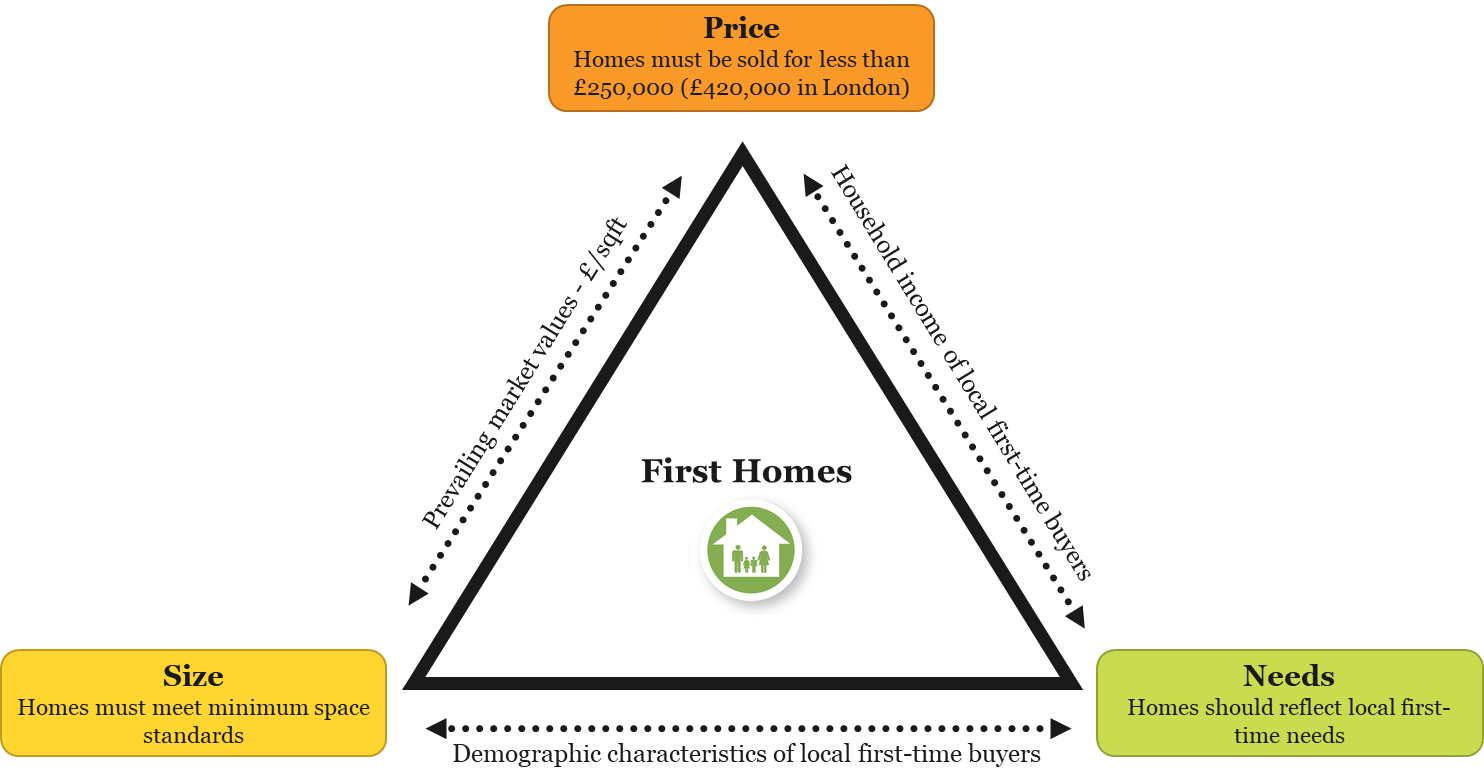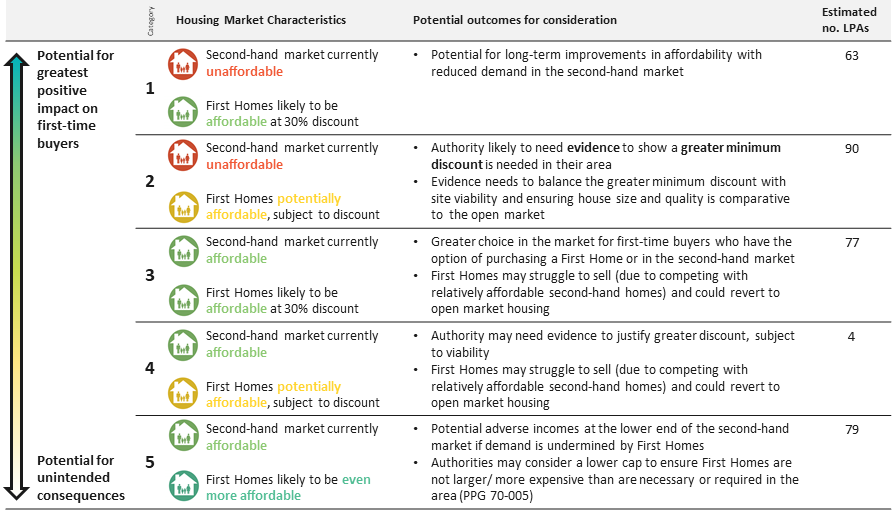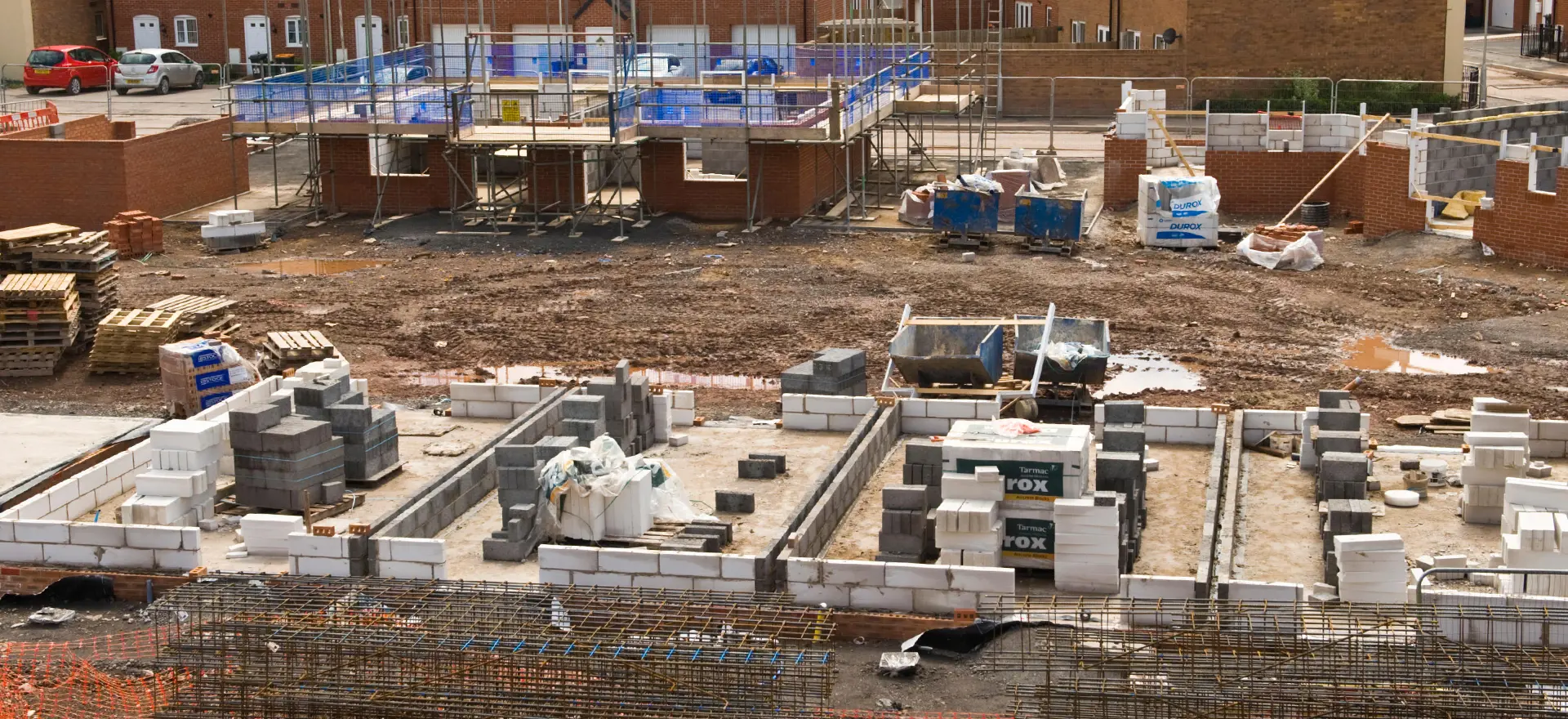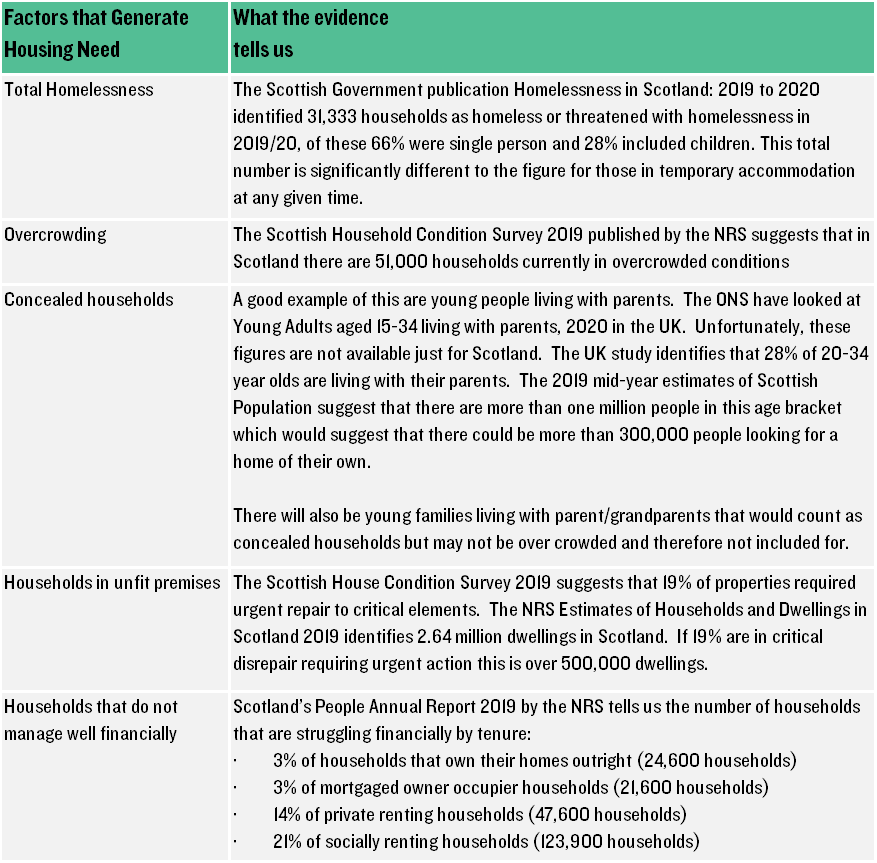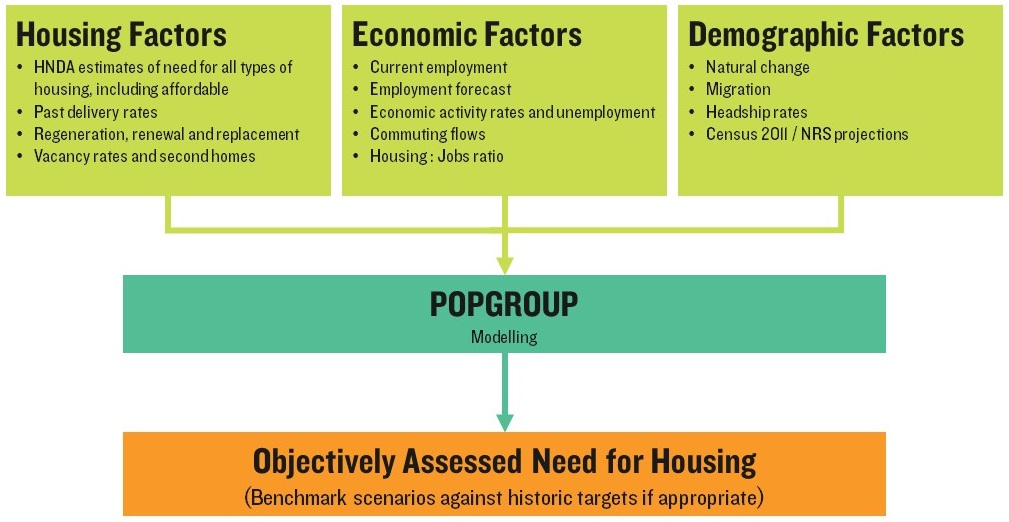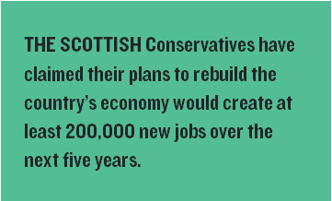Recent media reports have reignited the spectre of unimplemented permissions for housing and the prospect of a new ‘use it or lose it’ power.
Off the back of its annual speculation of how many unimplemented homes might exist
[1], the LGA advocated on 8
th May 2021 that:
"To help councils get developers building more quickly, the Queen’s Speech should bring forward legislation that enables councils to charge developers full council tax for every unbuilt development from the point the original planning permission expires.
It should also make it easier for councils to use compulsory purchase powers to acquire stalled housing sites or sites where developers do not build out to timescales contractually agreed with a local planning authority."
On the 14
th May 2021, the Times reported
[2] that:
"Developers will face new “use it or lose it” taxes for failing to build homes on land that already has planning permission amid concerns that more than 1.1 million have been left unbuilt in the past ten years.
Ministers are privately considering different ways to encourage higher rates of building. Under one proposal housebuilders would pay full council tax on all the properties in a project from one to two years after securing planning permission, regardless of whether they have been built."
So, we can see two possible policy strands here:
- A levy on homes unbuilt when a planning permission has expired (i.e. has not been started).
- Measures to drive the rate of build out of homes on a planning permission that has started but has not yet been completed, either through a levy on unbuilt homes or through a contractually-agreed timescale with CPO or a levy as a penalty.
In this blog, I consider each strand, drawing upon previous considerations of this type of policy by Dame Kate Barker (2006)
[3], Sir Michael Lyons (2014)
[4] and Rt Hon Sir Oliver Letwin (2018)
[5]. The validity of the 1.1m unimplemented permissions claim we will leave for another time, but watch this space.
1. Unbuilt homes on expired permissions
Under this strand, a levy (such as Council Tax) would be imposed on homes unbuilt when the planning permission expired.
Planning permissions are granted subject to a condition that they must be implemented within a set period of time, usually three years from the date it is granted. For
outline planning permission, reserved matters must be submitted for approval, which is normally within three years, and the works must be begun normally within two years of the final approval of the last reserved matter. Alternative time limit periods can be set – either shorter or longer – depending on the circumstances
[6].
If there has been a meaningful start of lawful construction works on site (which also means pre-commencement conditions have been discharged) then the permission will remain ‘live’. This could mean beginning earthworks or putting in a new highway access. If no construction works start on site, the permission expires.
How big a problem are expired permissions? Work by MHCLG in 2015 suggested around 10-20% of permissions ‘lapse’ or ‘drop out’ without being implemented, but that the number of permissions “
on hold” had reduced from 23% in October 2013 to just 10% in 2015. Research in 1995 for the RTPI and DoE by Roger Tym and Partners found a 10% rate of non-implementation (and this is often used as a ready-reckoner for five year land supply purposes). Local evidence for the South Worcestershire Development Plan found a 5% non-delivery discount was appropriate
[7].
All of this suggests the number of permissions targeted by this measure is going to be relatively small.
This aspect of a ‘use it or lose it’ policy was looked at in the Lyons Review
[8]. Lyons favoured such a measure, and also proposed requiring greater substantive progress to be demonstrated that works represent formal commencement. However, he suggested a five-year time limit for implementation, and suggest it be optional for the LPA. He also recognised the complications of such a power:
"Clearly, it is important that landowners are not unfairly penalised. There are some developments, particularly large, complex sites which will take more than 5 years to implement. These charges should only be applied if they are reasonable in the context of the individual site and only where the site has been volunteered by the landowner. There might be good reasons why an application could not be started for example, problems with viability or the absence of important supporting infrastructure. If the site is not viable and cannot be taken forward by the landowner, local authority or New Homes Corporation it would not be deemed deliverable and the charge could not be applied. Landowners and developers would also have the right to appeal."
A series of industry reviews have concluded that there is no commercial incentive for allowing permissions to expire
[9]. Applicants can re-apply but there is a risk of more onerous conditions or obligations being imposed, and – if the wider planning context has changed – a refusal is possible. Some permissions are not implemented because the applicant redesigns the scheme to
increase the number of homes it produces.
Therefore, for the small number of permissions that do lapse and are not re-planned, it is more likely than not this is because of problems with the site
[10], for example: land ownership, viability problems (perhaps due to previously unknown site constraints), a developer not being able to secure finance or meet the terms of an option, supply chain or labour problems, or there not being sufficient demand for the product. Self-evidently, many of these issues are more likely to occur on more complex, brownfield sites. And smaller housebuilders - with less resilient finances, shorter land pipelines and fragile supply chains - may experience more problems than larger builders
[11].
In this context, questions that would need to be answered in designing this type of policy include:
- How big should the levy be? And over what period should it be applied?
- Would it be mandatory or optional for LPAs? If optional, what would be the extent of take-up?
- How would any appeals system be administered?
- How many ‘lapsed’ permissions are there in reality, and what would be the housing additionality? Would otherwise lapsed permissions simply displace alternative schemes that would have come forward via applications due to a lack of five year land supply?
- Would the levy have unintended consequences? For example, how could we be confident it would not simply reduce the appetite of developers (especially SMEs) to promote more challenging sites or projects that are at greatest risk of stalling? What effect would it have on the prospect of developers revisiting permissions to see if they can increase the housing delivered on sites?
2. Unbuilt homes on sites that have started
The second strand of a possible ‘use it or lose it’ policy is to drive an increased rate of build out on sites that have started. This relates to a much greater number of sites with permission than the first strand, because a significant number of permissions have been issued (in outline or full) for schemes of 500+ homes that typically build out over a number of years. The build-out rate debate is typically encapsulated by the concept of market absorption and the process is clearly explained in the OFT report
[12] and by Letwin
[13]. The latter concluded that, under market conditions, increasing the rate of housebuilding on larger sites is more likely to come from increasing the number of different housebuilders (or flags) building on a site (including the mix of types of homes built as endorsed now by the NPPF 2018/19), rather than expecting an individual housebuilder to increase its volume from an outlet beyond the typical 50-60 dpa.
What currently happens?
The NPPF (paras 72-73) requires local plans to have a trajectory illustrating the expected rate of housing delivery and to set out the anticipated rate of development for specific sites. The Planning Practice Guidance identifies the need to gather information on specific sites to assess the timescale within which each site is capable of development, including lead-in times and build-out rates
[14]. The contribution an application site is expected to make to housing delivery in early years can be material to whether it is approved to address shortfalls in the five-year land supply. An LPA can consider how much large sites might deliver within a plan period in deciding which sites to allocate. However, this information is evidence and not a binding contract.
In recent years, Central Bedfordshire Council has sought to introduce a ‘housing delivery clause’
[15] which it explains as follows:
“For any applicable site, the Council will seek a delivery timetable to be put forward by the site promoter … which will then form part of the accompanying section 106 agreement….
The delivery schedule (for both market and affordable housing) should ensure the timely delivery of the balance of homes that it is considered can be realistically delivered within the first five years following the signing of the agreement.
This approach supports the expedient delivery of new homes and allows the local planning authority (LPA) to exercise some degree of control.”
This clause – which applies to the first five years only – is claimed by the Council to be a legitimate use of a s.106. However, its practical impact is uncertain. An Inspector on a s.78 appeal in the District
[16] concluded that:
“I have concerns about the necessity of this type of obligation and how effective this obligation actually would be in the event of slippage in the programme. The Council was not able to provide any assurances on how the use of an injunction would be an effective remedy. The obligation is useful in so far as it is primarily an indication of what the developer considered to be deliverable when the obligation was executed. ... It is not necessarily or may not be sufficient assurance as to the timing and number of units completed over the time period.” (Para 116)
In practice, the clause lacks teeth which is presumably why some developers have been content to sign-up to its provisions.
Implications of a new measure to drive the rate of build out
Large housing development sites are not homogenous. Their rate of build out will be impacted by a number of factors
[17], including underlying levels of housing demand, housing mix and variety (including tenure), the physical characteristics and composition of the site and the phased delivery of infrastructure, particularly highway improvements. The delivery model for sites (for example, is the site led by a master developer, a consortium of builders, or a single housebuilder?) will also play a role. Rates of build out vary significantly between different sites
[18], and crucially, they also change over the lifetime of the development with some sites seeing peaks 2-3 times the average rate
as circumstances change over the life of the development for example linked to economic cycles
[19].
The report in the Times flags two policy models being considered for this issue:
- a levy on all unbuilt homes following the grant of permission, with the aim of providing a financial incentive to build out more quickly.
- a penalty system linked to progress against an agreed trajectory (essentially, the Central Bedfordshire approach, but with teeth)
Both Barker and Letwin identified challenges with these approaches and whilst seeing a superficial attraction, ultimately rejected them.
The Barker Review Final Report said:
"6.23 Attempting to increase build-out rates through a fiscal measure would potentially have the effect of changing builder behaviour by increasing the cost of holding land. However, such a measure could have a number of negative side effects:
- Housebuilders rely on phasing sites to ensure adequate cash flow, so that profits from previous sales fund future development. Reducing cash flow could prevent development.
- Some sites would not get developed, as the costs of development would be increased. This may be particularly true on complicated brownfield sites where land assembly and construction are typically more difficult to achieve. It could also impact on higher density development, particularly high-rise.
- Furthermore, housebuilders may become more risk averse under such a policy, as they will face higher penalties for getting a housing development decision ‘wrong’ and thus finding that it is necessary to build a site out more slowly or to postpone development. Increased risk aversion would lead, overall, to a drop off in development, as marginal projects become unviable.
6.24 As the Interim Report noted, slow build-out rates and the exercise of market power are only likely to be of concern for large sites. Applying a fiscal measure of this sort to all sites could both increase administrative burdens on local authorities as they monitor output, and/or end up penalising those developments that run into unexpected problems following the granting of planning permission.
6.25 It is also questionable whether such a measure would be effective. If an extra cost were to be placed on housebuilders, it is likely that this would be factored into their calculations and ultimately capitalised back into land prices offered to landowners. By reducing residual values, some developments, particularly marginal brownfield sites, could be prevented.
6.26 Policy changes that result in more land coming forward for development overall would increase the amount of new housing coming onto the market, even if it was ‘trickled-out’ at present speeds, without distortions to developers’ business practices. To encourage increased build out rates, it may therefore be simpler instead for local authorities, faced with a large site awaiting development, to award a higher number of smaller permissions for the site and allow market competition to provide incentives for swift development."
The Letwin Review said:
“it would not be sensible to attempt to solve the problem of market absorption rates by forcing the major house builders to reduce the prices at which they sell their current, relatively homogenous products. This would, in my view, create very serious problems not only for the major house builders but also, potentially, for prices and financing in the housing market, and hence for the economy as a whole.”
Were such measures to be introduced, for developers there would need to be a triangulation between: the cost of the levy on unbuilt homes; the value of homes built on a site (with a faster sales pace or alternative tenure likely being associated with a reduced valuation); and the practical construction and phasing challenges of each site (including planning obligations). The impact of the levy would have to be priced into the development appraisal
[20]. The intention of recent planning system reform has been to ‘up-stream’ viability considerations to the local plan process, so there are practical considerations:
- The residual land value approach means that, theoretically, the ‘cost’ of the levy or threat of CPO (however incurred[21]) would come off the land value. However, if the appraisal showed the residual land value below the Benchmark Land Value[22], the Local Plan process would see the planning obligations (e.g. for affordable housing) reduced and some developments (especially on sites with heavy infrastructure burdens or abnormal costs) might not be viable[23].
- Subject to scale of the levy, it could act as a disincentive for promotion of large sites, and developers might just scale down the developments they put forward, to reduce the number of homes subject to the levy[24], perhaps then re-planning in phases to drive up the numbers.
- If the levy was too punitive, it might simply see land not being put forward at all, as landowners sit out the policy (the bane of land value capture throughout history).
- Arriving at a trajectory for build out to form the basis of a contract with financial implications would be time-consuming and add to the length and complexity of the planning process (perhaps akin to bolting on PFI-style contract arrangements to the planning system).
- It might require an approach (as suggested by the Lyons Review), in which the levy or penalty was applied only to the unbuilt homes in individual phases:
"Large complex developments will have a number of phases and the two year timescales should apply to the phases individually but in the context of an approved masterplan. This will ensure timely implementation of each phase and will also allow for further negotiation to take account of increase in value during the development of the scheme by avoiding too much of the detail having to be locked up in the original planning permission."
This would mean arriving at an agreed segmentation for the site and then revisiting assumptions about the rate of build out for each phase as development proceeded. This would add a layer of complexity at a time when the planning system is seeking simplicity.
The LGA also proposes increased powers for use of CPO. CPO is already available as a tool for bringing forward stalled sites. For developments that are progressing, but are considered to be building out too slowly, would this really be a proportionate use of Council resources? What value would be paid for the unimplemented portion of the site? As a threat it would only work if developers believed it to be real, and given the difficulties many LPAs have in resourcing even basic planning functions, this seems unlikely. Not mentioned by the LGA is the use of completion notices (reform of which was proposed in the Housing White Paper).
Where does this leave us?
If press reports are to be believed, ‘use it or lose it’ is on the political agenda. Scrutiny of such an approach (however formulated) is required, including looking at the reasons it was rejected by Barker and Letwin, and grappling with the practical complexities identified by Lyons. And stepping back for the moment, two things are clear:
- The number of homes with permission that expire is small (10% or less) and on most occasions this will be for a good reason. A policy that penalises those who bring forward sites at greatest risk of failure may simply reduce the number of more difficult sites that come forward in the first place. Is this compatible with the brownfield agenda?
- To address the country’s housing crisis, the ambition for 300,000 homes per annum needs to be sustained over a long period[25]. Planning involves thinking long term, and some areas are now looking forward to 2050[26]. Even the very largest sites – including the Government’s Garden Communities – will build out in full by that time[27]. The strategic challenge is how needs are met over that long period; the ‘use it or lose it’ debate is arguably more about sequencing, whilst not changing the amount of land that ultimately needs to be allocated[28].
The 'use it or lose it' policy brand will sound attractive to many. But looked at strategically, the size of the prize is unclear and its practicalities yet to be worked through. Policy makers will need to be confident such a policy could be a more positive way of boosting housing delivery than requiring LPAs to formulate effective land supply strategies, and that its theoretical policy gains outweigh the real world risks identified by previous reviews.

[1] The LGA produces an annual comparison of homes granted permission and numbers completed. Its latest iteration is here.[2] Article is here (paywall)[3] The Barker Review of Housing Supply[4] The Lyons Housing Review: Mobilising across the nation to build the homes our children need[5] In his 2018 Review of Build Out[6] See the PPG at ID: 21a-027-20140306[7] SWDP Inspector’s Interim Findings[8] Pages 67-68 of his review.[9] In addition to the Letwin Review and Lyons Review. For example, the Calcutt Review, the Barker Review, the Office for Fair Trading Homebuilding Market Study, and the Chamberlain Walker research on land pipelines.[10] An analysis of sites in London by Quod and Molior from 2019 – see here – found that of the 175,963 homes with permission at that snapshot moment in time, the overwhelming majority were underway, about to start on site, awaiting discharge of conditions, CPO or externally funded infrastructure. Some (10%) were being re-planned to improve design (and in many cases to increase the number of homes). Around 12% were schemes that had not started, but where there was an existing active use on the land (with business and jobs). Less than 7% (just 12,000) homes were on schemes not started and where progress was unknown.[11] See for example this 2017 report here exploring the land and planning, finance and ‘red tape’ barriers for SMEs housebuilders [12] See para 4.36 – 4.44 of the OFT report[13] See para 4.6 – 4.16 of Letwin’s Interim Report[14] ID: 3-022-20190722[15] In its Housing Delivery Clause Technical Note (available here)[16] APP/P0240/W/16/3164961[17] See the analysis on pages 14-17 of Lichfields’ Start to Finish (Second Edition)[18] See Figure 8 of Start to Finish (Second Edition)[19] See Table 5 of Start to Finish (Second Edition)[20] This itself would cause practical ‘Red Book’ valuation difficulties, as the appraisal would need to make an assessment of the impact of increased rates of build out on the price of new homes. Securing agreement would itself be a cause of difficulty in the Local Plan process.[21] Via the cost of the levy itself, or a reduced sales value due to faster build out, and/or extra developer margin to account for risk of CPO or levy [22] Which the PPG defines as “existing use value (EUV) of the land, plus a premium for the landowner. The premium for the landowner should reflect the minimum return at which it is considered a reasonable landowner would be willing to sell their land. The premium should provide a reasonable incentive, in comparison with other options available, for the landowner to sell land for development while allowing a sufficient contribution to fully comply with policy requirements.”[23] In the context of large sites, the NPPF 2018/19 enables LPAs to impose planning obligations (including high levels of affordable housing) up to a scale that leaves a landowner with no more than a benchmark land value[24] It is notable that Central Bedfordshire applies its housing delivery clause only to the first five years of a development, which in practice will mostly mean schemes of 500 homes or fewer, and therefore does not address later phases of larger scale sites such as sustainable urban extensions or new settlements. [25] The Redfern Review suggested that “new supply of 300,000 dwellings per year over a decade would be expected to cut house price inflation by around 5 percentage points (0.5 percentage points a year). This could be further reinforced by changing house price expectations (not modelled). In other words boosting housing supply will have a material impact on house prices, but only if sustained over a long period.” [26] For example The Oxfordshire Plan 2050 [27] See Figure 8 of Lichfields’ research on the Garden Communities programme.[28] By way of example, if an area’s contribution to long term housing supply was hypothetically to build 20,000 homes over 25 years, it could achieve this with four sites of 5,000 homes building concurrently at 200 homes per annum, or it could have two pairs of sites building out sequentially, but at a rate of 400 per annum. Fundamentally, the number of homes built by the end of the period would be the same, and the price of more rapid built out on individual sites might be to see lower contribution to planning obligations.
